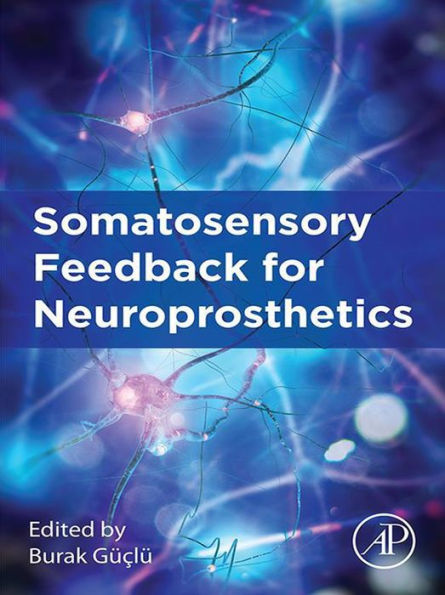Although somatosensory system works in tandem with the motor system in biology, the majority of the prosthetics research and commercial efforts had focused on accommodating movement deficits. With the development of neuroprostheses in the last 15 years, it has become evident that somatosensory input (mainly as touch and proprioception) is essential for motor control, manipulating objects, and embodiment, in addition to its primary role for sensory perception.Somatosensory Feedback for Neuroprosthetics covers all relevant aspects to facilitate learning and doing research and development in the field.To understand the properties of the body to create viable solutions, this book starts with chapters reviewing the basic anatomy, physiology, and psychophysics of the somatosensory system, sensorimotor control, and instrumentation. Some sections are dedicated to invasive (peripheral and central, mainly cortical) and noninvasive (vibrotactile, electrotactile, etc.) approaches. Final chapters cover future technologies such as novel sensors and electrodes, safety, and clinical testing, and help to make up future prospects for this field with an emphasis on development and end use. With contributions from renowned experts, the contents include their recent findings and technical details necessary to understand those findings. - Provides a concise review of the somatosensory system and latest advances in the use of somatosensory feedback for neuroprosthetics - Analyzes many approaches to somatosensory feedback - Provides the most detailed work on somatosensory neuroprostheses, their development, and applications in real life work
1138332537
Somatosensory Feedback for Neuroprosthetics
Although somatosensory system works in tandem with the motor system in biology, the majority of the prosthetics research and commercial efforts had focused on accommodating movement deficits. With the development of neuroprostheses in the last 15 years, it has become evident that somatosensory input (mainly as touch and proprioception) is essential for motor control, manipulating objects, and embodiment, in addition to its primary role for sensory perception.Somatosensory Feedback for Neuroprosthetics covers all relevant aspects to facilitate learning and doing research and development in the field.To understand the properties of the body to create viable solutions, this book starts with chapters reviewing the basic anatomy, physiology, and psychophysics of the somatosensory system, sensorimotor control, and instrumentation. Some sections are dedicated to invasive (peripheral and central, mainly cortical) and noninvasive (vibrotactile, electrotactile, etc.) approaches. Final chapters cover future technologies such as novel sensors and electrodes, safety, and clinical testing, and help to make up future prospects for this field with an emphasis on development and end use. With contributions from renowned experts, the contents include their recent findings and technical details necessary to understand those findings. - Provides a concise review of the somatosensory system and latest advances in the use of somatosensory feedback for neuroprosthetics - Analyzes many approaches to somatosensory feedback - Provides the most detailed work on somatosensory neuroprostheses, their development, and applications in real life work
150.0
In Stock
5
1

Somatosensory Feedback for Neuroprosthetics
716
Somatosensory Feedback for Neuroprosthetics
716Related collections and offers
150.0
In Stock

Product Details
| ISBN-13: | 9780128230008 |
|---|---|
| Publisher: | Elsevier Science & Technology Books |
| Publication date: | 07/19/2021 |
| Sold by: | Barnes & Noble |
| Format: | eBook |
| Pages: | 716 |
| File size: | 16 MB |
| Note: | This product may take a few minutes to download. |
About the Author
What People are Saying About This
From the B&N Reads Blog
